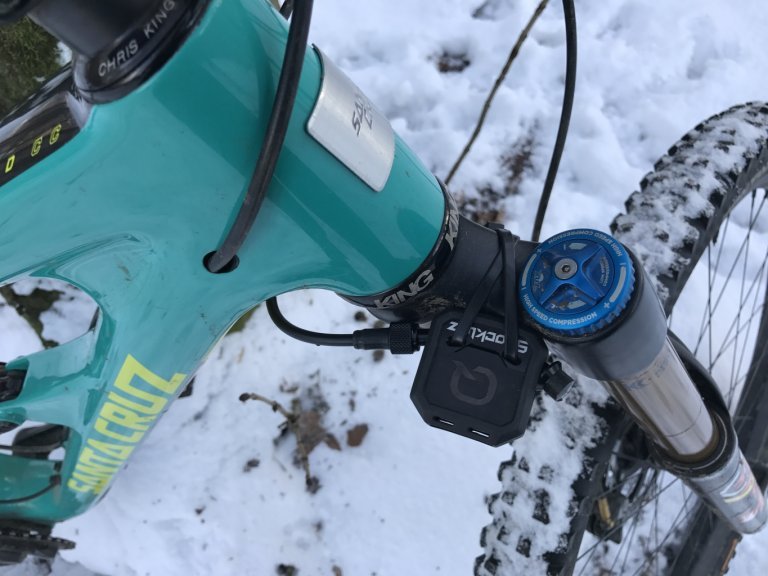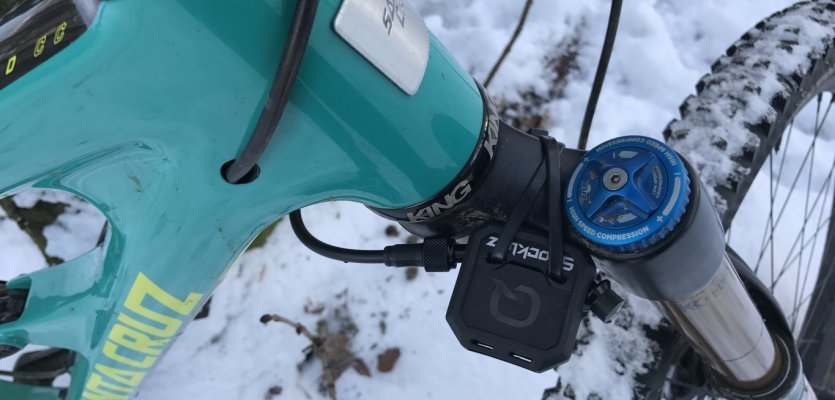
Review: ShockWiz™ by Quarq – Automated suspension tuning for mountain bikes
Air pressure, rebound and compression adjustment are part of the sophisticated set-up process of a mountain bike suspension system. We tested the ShockWiz.
Is your suspension set up correctly? Are you the type of rider that does not change a winning system or do you constantly fiddle with the tuning of your fork and rear shock?
The current solo air suspension elements not only offer great performance, but also great options for the fine tuning of air pressure, spring rate, compression and rebound. Unfortunately, there is also a lot of room for error. Now there is an answer to shine light into this grey zone: The Quarq ShockWiz! It started out as a Kickstarter project that quickly gained so much momentum that SRAM acquired the company at the beginning of 2016. After an overhaul and further R&D, it has now been relaunched within SRAM’s Quarq range of power meters and data collection systems.
Installation of the Quarq ShockWiz™
The small, waterproof ShockWiz device connects to your fork or rear shock via the Schrader valve. The device itself consists of a highly accurate pressure sensor and a microchip that collects air pressure data at a rate of 100-times per second. The changes in air pressure are then analysed by a proprietary algorithm.
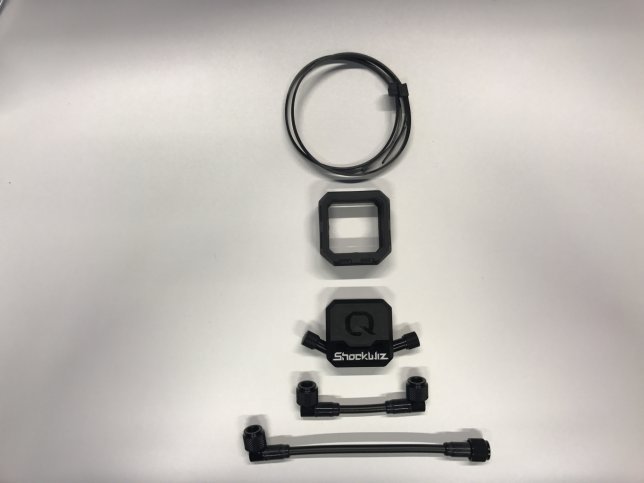
The ShockWiz™ package content
The results are displayed through the matching smart phone app. This can be done during the ride or afterwards. It’s not necessary to carry the phone on you. The app then maps the characteristics of the shock and detects undesirable suspension behaviour, making suggestions on how to improve performance. The recommendations consist in changes in baseline air pressure, fine tuning of the air spring ramp by adding or removing spacers, rebound adjustment, low and high speed compression adjustment and the bottom out resistance.
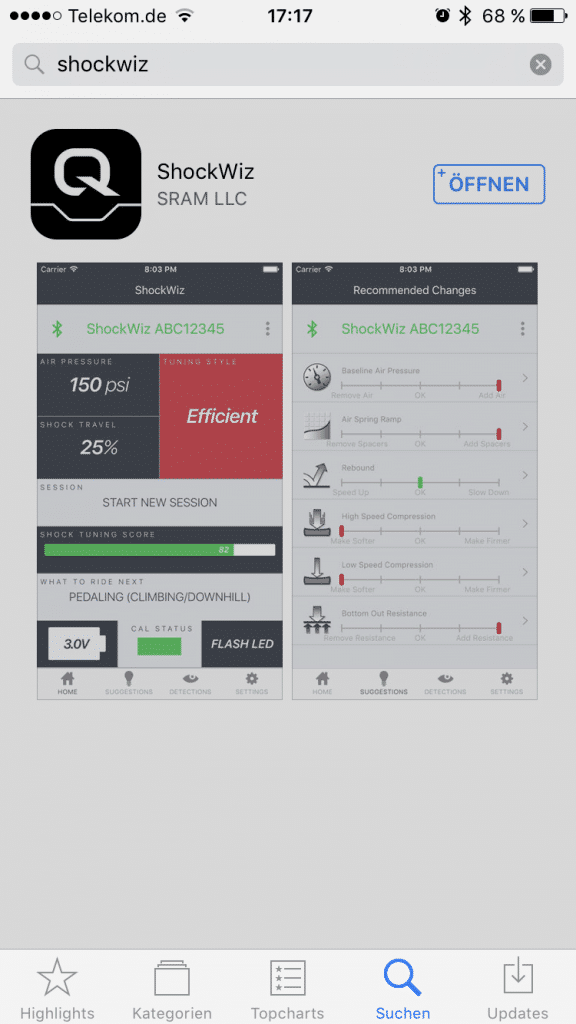
The ShockWiz™ App is available for Android and iOS
I was lucky enough to lay my hands on the new gadget a couple of days before its official release. The test conditions on the trails around Aachen, Germany were far from ideal as the ground was covered in snow and temperature lingered around freezing. However, I did not let that hold me back from getting some descent trail time in with the ShockWiz.
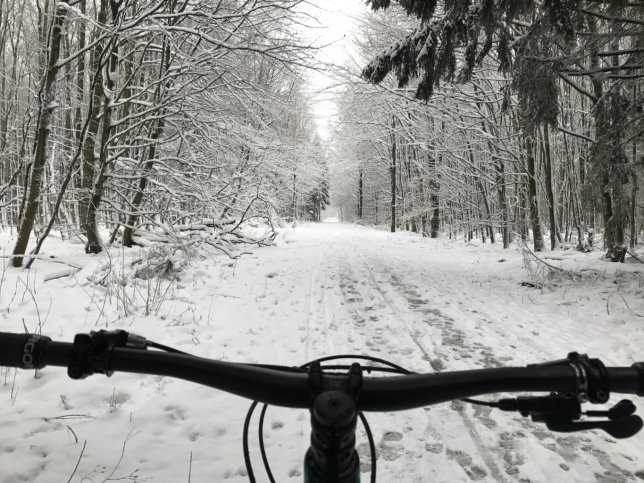
Ice and snow, far from ideal conditions for testing
Unboxing
The ShockWiz package contains the device itself, a rubber mounting boot, a couple of zip ties and two angled, high pressure hoses, a short one and a long one.
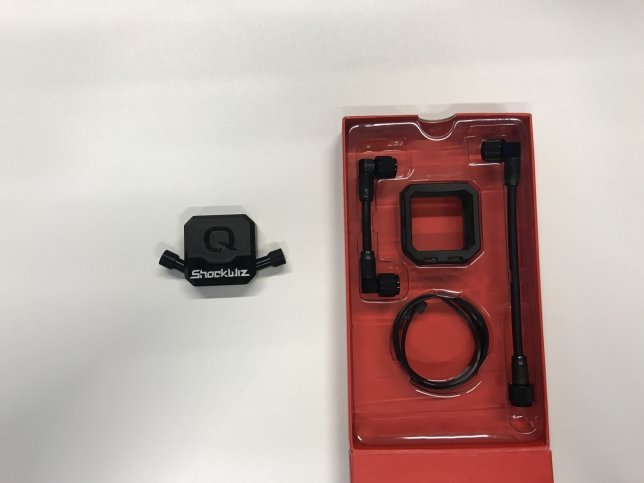
Installation of the device is simple, quick and easy.
You also find a note that reminds you to download the ShockWiz app to your phone and points you towards an online manual. You will easily find the app for Android and iOS with the search term „ShockWiz“. Just don’t look for “Quarq” as it will lead you only to Quarq’s power meters. An extensive manual that reads perfectly well on your smartphone can be found at www.shockwiz.com.
Installation, calibration and data collection
The first step is to connect the high pressure hose to the device and then to the air valve at the damper of the fork or rear shock. The long hose serves for the fork, the short one for the shock. The device itself has two valves at different angles with the same function. Use them freely for optimum positioning of the ShockWiz device while trying to avoid bending it. Using the zip ties, you attach the device to the air chamber of the rear shock or the back of fork’s crown. Assure that there is room for free movement when pedalling, turning and damping.
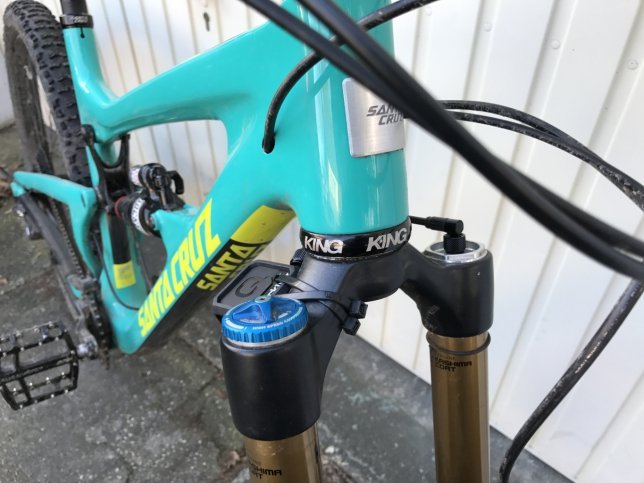
Make sure that there is room for free movement when pedalling, turning and damping.
Once the ShockWiz is installed, open the app on your phone and connect with the device via Bluetooth. Should your app not see the ShockWiz device, it might simply be turned off. A short rattle and it should come to life from standby, signalling with a red light blinking in long intervals. Upon first connecting with the app, a calibration wizard begins. It can be found again in the system settings in case it’s not completed at this moment. The wizard determines the compression ratio in the air chamber. First, remove all the air. This way you create two reference points: complete compression and zero compression. A second person comes in handy at this point, should you not have your phone right by your side. Using the compression ratio, ShockWiz calculates relative shock travel and damping and rebound speeds during regular performance.

Upon first connecting with the app, a calibration wizard pops up.
Should you change the air chamber volume with spacers, this calibration has to be repeated. My fork showed a ratio of 2.6 and my shock 2.5. You can use the second valve on the device to empty and refill the air chamber. The app gives you a live reading of the pressure and allows you to adjust it accurately to the decimal. Hence, there is no problem to return the pressure to your personal setting after the calibration process is finished.
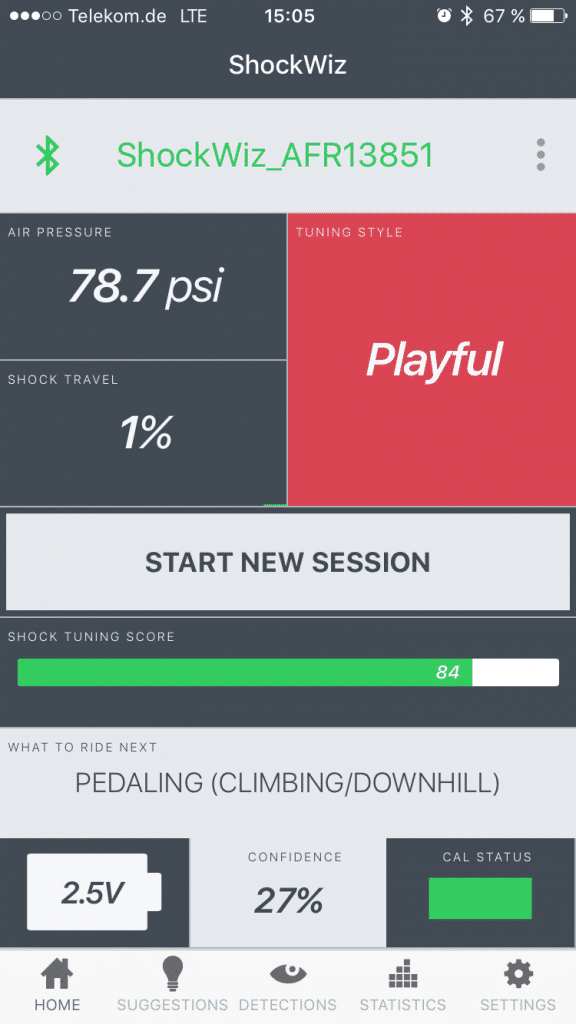
The app gives you a live reading of the pressure and allows you to adjust it accurately to the decimal. Hence, there is no problem to return the pressure to your personal setting after the calibration process is finished.
That was basically it. You simply have to start a new session in the app now, resetting the data storage and levelling shock travel at zero. This can also be done manually. It is dependent on atmospheric air pressure which changes with the weather and altitude. Simply do it right before setting off on the trail. In addition, you need to select a tuning style from the following options: aggressive, playful, balanced, and efficient. It will form the bases for the report that is later generated. You don’t have to carry your smartphone with the app with you however. The collected data is saved on the device until a new session is started. Make sure you have set the SAG more or less correctly on both of your fork and rear shock before starting your ride, as it has great influence on the performance of your suspension system.
Now you are ready to hit the trail. And you will have lot of trail time as the report requires a great amount of varied performance data. Your ride should include everything from gnarly roots and rocky sections to hairpins, berms, jumps and drops. Don’t forget the climbs either. Short and steep slopes to long uphills, provide valid samples of the terrain you usually encounter. It is important that you don’t make any changes to your setup during the ride, including lockouts.
By the way, the CR2032 battery will last for much longer than one session. In any case, it can be replaced very easily by removing the transparent casing from the aluminium body with a flat screwdriver.
The report
Upon meeting certain requirements for the amount, quality and variation of the data collected in different areas, so called detections, the ShockWiz creates a report with a shock tuning score. Based on the report, the device makes recommendations for the tuning of your suspension system.
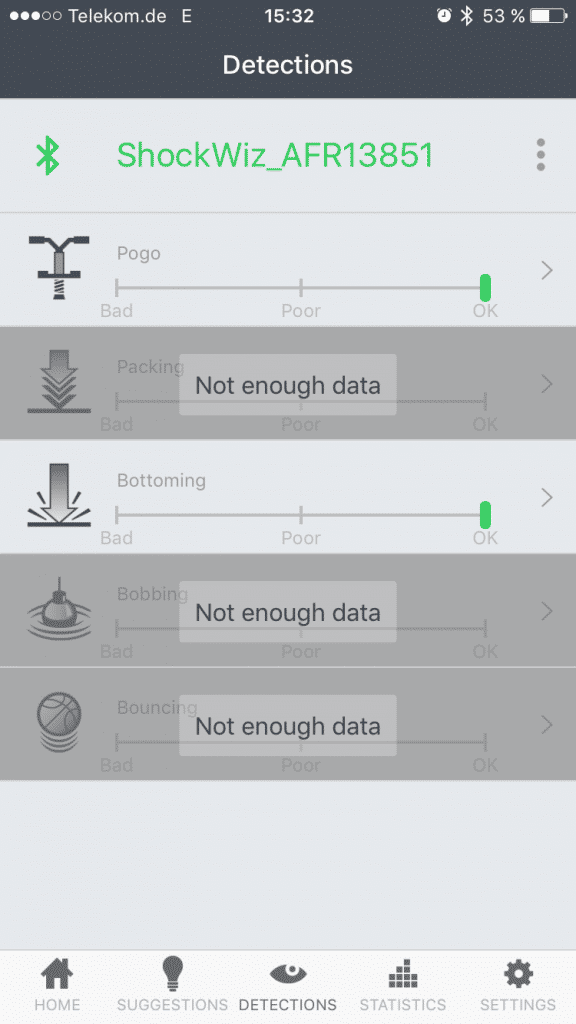
Only when enough data for a detection is collected, will you receive a recommendation.
Only when enough data for a detection is collected, will you receive a recommendation. If there is more than one recommendation, only the highest ranking one should be made. Then you have to start a new session and generate a new report for further tuning.
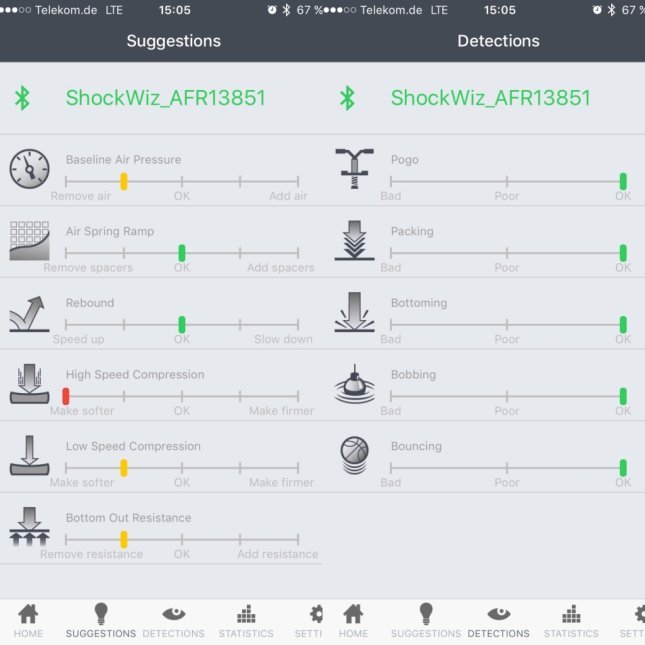
Upon meeting certain requirements for the amount, quality and variation of the data collected in different areas, so called detections, the ShockWiz creates a report with a shock tuning score. Based on the report, the device makes recommendations for the
I was surprised that I had to get a lot of trails in to collect sufficient data and reach the minimum confidence level. My system showed “green” lights in all the detection areas. So I was not too far off from reaching top performance. However, there were still a couple of recommendations and room for improvement regarding my base air pressure and high speed compression. This matched my personal feeling. However, the weather conditions did not allow me to max out my riding style and hence the suspension system. The freezing temperatures also had their effect on the compression and damping, but I was happy that bottom resistance and air spring ramp were set correctly.
Conclusion
The ShockWiz Installation and set-up is quick, easy and intuitive. Every setting in the app has additional explanations, which makes it accessible for riders without expert technical background. The quality of the report is excellent and offers recommendations that are helpful for beginners and professionals alike. The ShockWiz device itself does not interfere or diminish performance of the suspension system in any way, nor does it mean a significant weight increase.
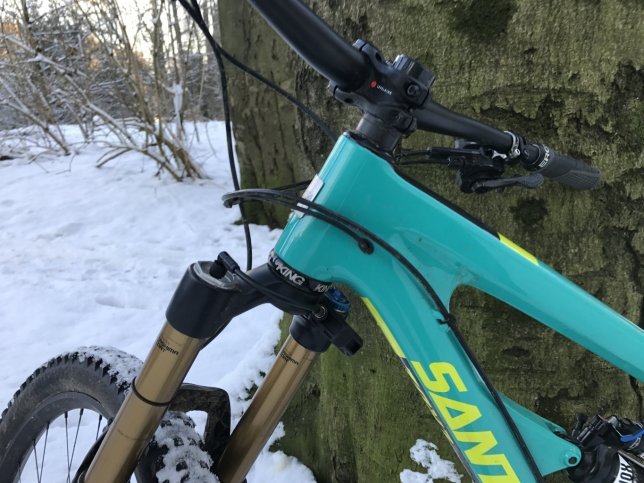
The ShockWiz Installation and set-up is quick, easy and intuitive. Every setting in the app has additional explanations, which makes it accessible for riders without expert technical background.
Once set up, all it takes is activating the app and starting a new session to get going. This makes the ShockWiz a tool for continued use. No chance that it will disappear in my toolbox now. I can see me using it frequently for trips to the bike park or vacations in different terrain, where a new suspension setup is beneficial. The ShockWiz really is your personal race engineer. Fine tuning your MTB suspension system like a professional just got a whole lot easier.

